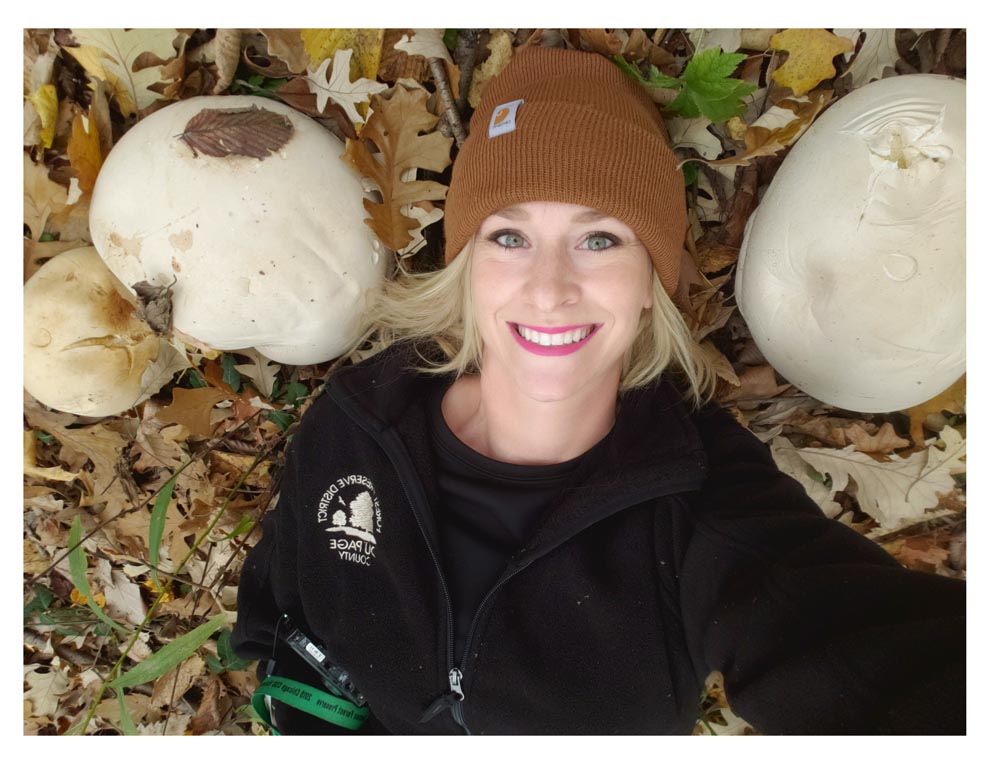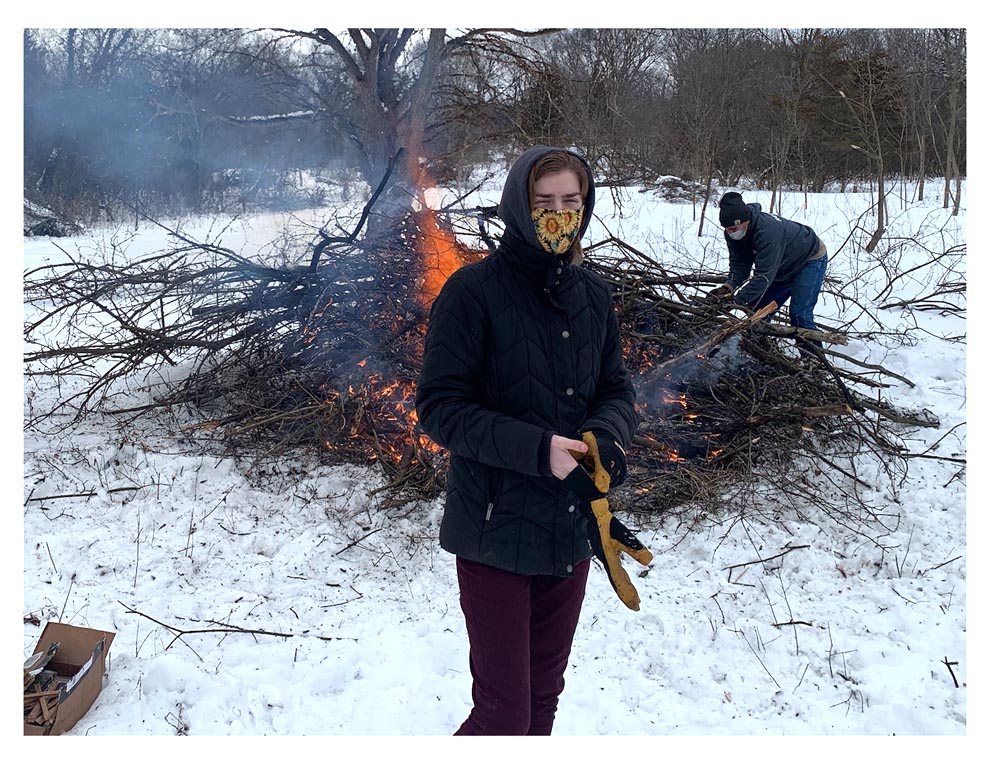By Shae Burnham
First of two parts
It was below freezing, and fresh snow painted the path through the forest. On such days, only a minuscule number of people would take to the trails. One of them was Anna Bakker, who had donned her winter hat and worn work gloves and dragged a small cart of buckets and tools behind her into the forest. The sun had barely risen, but there was determination and drive in each of her footsteps.

The dense wood eventually gave way to a large clearing where she placed her cart. A few volunteers were there prior to her arrival, myself included, and Anna greeted us with a smile. It wasn’t the first time she met some of us, and it certainly wouldn’t be the last. Before long, she and the other volunteers began their work, chopping up the underbrush and throwing the cuttings into piles to burn. Just across the trail, past the clearing of brush piles, I can see the cold Fox River flowing calmly. Four years ago, it was impossible to tell the River was there.
“I used to pass by the site daily and cringe,” said Bakker. “I dreamed of a day when I could pass by and see the majestic view of the River as nature intended, unburdened by the invasive growth blocking the view and killing off the remnant oak woodland. I wanted others to see and know what a healthy ecosystem looks like, and to feel pride in our community.”
Four years may seem like a long time, but for Anna Bakker, it is only a fraction of her career working to restore the natural environment in the Chicago area. Once a month, she gathers up her tools and meets other volunteers early in the morning to remove invasive species from the Fabyan Woods Forest Preserve in Kane County. Despite working for the Forest Preserve District of DuPage County, she works for hours at Fabyan on her own time. She does it for two simple reasons: her appreciation for the environment around her and her love for the those who come to work with her.

“My volunteers are like a woodland family,” said Bakker, “We work together, and each person plays a vital role in helping to restore the land. Not only do we help heal the land but the work is also like wilderness therapy for the volunteers. You get a sense of accomplishment after the day is complete and it’s a great workout. Plus, the work we do leaves a legacy for both ourselves and others to enjoy.”
Historically, Illinois was approximately 60% prairie, but we’ve lost 99.99% of it over time. Additionally, oaks were a large part of the Chicago woodland area, but their presence has decreased, and the state of their ecosystem has changed. The restoration project in Fabyan Woods that Anna Bakker stewards works towards restoring those prairies and oak savannas.
Ecosystem restoration is not a new concept, but what does it mean exactly? It is the process of restoring degraded and damaged habitats to a sustainable and healthy state; a process that takes the time and effort of numerous volunteers over years to accomplish. Despite the challenges, there has been increasing importance of starting restoration initiatives globally. The U.N. General Assembly has established the Decade on Ecosystem Restoration precisely to support that need. The resolution intertwines restoration with sustainable development, climate action, and current restoration initiatives and aims to boost the number of ongoing projects.
Restoration projects are open to volunteers of all ages. “I have kids come out, even sometimes that are in preschool, and I’ve had 100-year-olds come out and everyone has a different thing that it means to them,” said Bakker. To Anna Bakker, educating the community is just as important as the work itself. By being out in the environment, learning the background of the area, and contributing to the work themselves, volunteers can form a connection with the project and spread awareness about restoration. “I as one person can have only so much of an impact, but I can teach more people around me and share that message and get them involved.”
Continued at thevoice.us/restoring-an-ecosystem-requires-preparation-gardening

